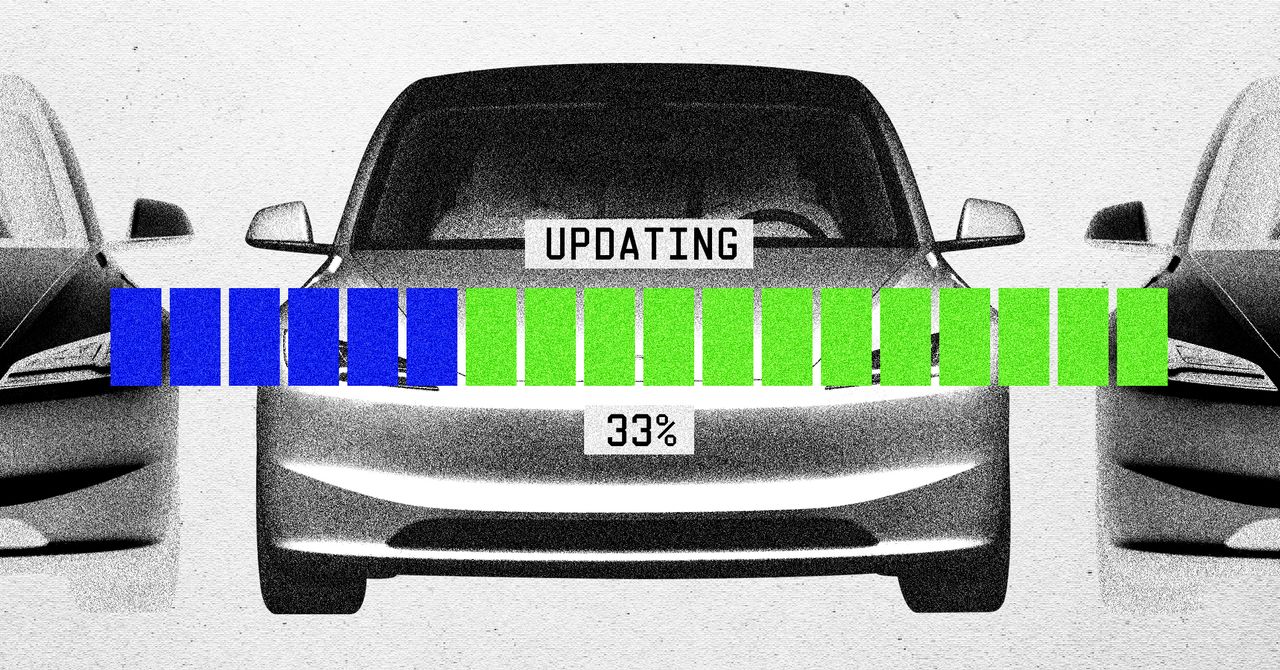Despite years of effort and the outlay of billions of dollars, none of the world’s automakers have yet to match Tesla’s prowess in delivering over-the-air (OTA) software updates. Just like with your phone and laptop, these operating system refreshes allow owners to upgrade their cars remotely.
Tesla introduced OTAs in 2012, but now Elon Musk’s company pumps out these updates like no other automaker. “Tesla once issued 42 updates within six months,” Jean-Marie Lapeyre, Capgemini’s CTO for automotive, tells WIRED. But for many other automakers, says Lapeyre, OTAs ship “maybe once a year.”
For traditional car companies, software remains, or has been until very recently, merely one bolt-on component among many. In contrast, for Tesla and other digital-native automakers—among them Rivian, Lucid, Polestar, and Chinese brands such as BYD, Xpeng, and Xiaomi—it’s almost the whole shebang.
Interestingly, GM was actually the first automaker to introduce OTA functionality, two years ahead of Tesla, but it was limited to the OnStar telematics system. OTAs from traditional automakers often add just infotainment tweaks, while OTAs from the digital-first brands can be shape-shifters, increasing range and boosting speed. They often also gift features from the puerile to the genuinely performative: fart noises on demand from Tesla, plusher suspension for Rivian owners, and car unlocking by phone from Polestar.
Cars have had onboard microprocessors since the 1970s, but until relatively recently traditional automakers made their cars with software designed to remain largely unchanged throughout a vehicle’s 20-year lifespan. Since 2021, the complexity of the latest vehicle software platforms has increased by about 40 percent per year, estimates McKinsey. There are now 69 million OTA-capable vehicles in the US, reckons S&P Global.
Such software-defined vehicles, or SDVs, would boost car sales, automakers hoped. According to two scorecards measuring SDV progress, Tesla leads the pack. Gartner’s Digital Automaker Index for 2025 places Chinese EV manufacturers Nio and Xiaomi in second and third positions, respectively. Wards Intelligence agrees these are the three to beat. On the other end of the scale, and similar to the Wards analysis, Nissan, Toyota, Mazda, and Jaguar Land Rover wallow at the bottom.
Saving and Selling
Done right, OTAs not only freshen a car’s user experience, they can also slash the cost of recalls for automakers. More than 13 million vehicles were recalled in 2024 due to software-related issues, a 35 percent increase over the prior year. Before OTAs, the average cost of an auto recall was about $500 per vehicle. OTAs may be delivered wirelessly, but they are not cost-free, either for the environment or for automakers—Harman Automotive, a supplier of OTA software, estimates that it costs an automaker $66.50 per vehicle to deliver a 1 GB update.
But it’s usually only the digital natives sending out huge update files, because generally only they are capable of firmware over-the-air (FOTA) updates. These can update powertrains, battery management, and braking systems. FOTA capabilities require cars—usually EVs—to have good, persistent connectivity and significant computing power, much of it left latent for future updates. Lucid’s Gravity electric SUV, for instance, is equipped with the latest Nvidia Orin-X processor, with 512 GB of onboard storage, yet the vehicle’s OS fits on just 100 GB, leaving oodles of room for later OTA refreshes.
As Western car company revenues fall, automakers are looking to make money from OTA-enabled subscriptions. Give Tesla $2,000 and, with the optional Acceleration Boost, your EV can be unlocked over-the-air to become a tire squeal quicker off the mark. For another $10 a month, Tesla’s “premium connectivity” package adds streaming data, live sentry cams, and other goodies. Want what critics claim is the misleadingly named Full Self Driving (FSD) Supervised feature? It’s yours for an additional $99 a month.



